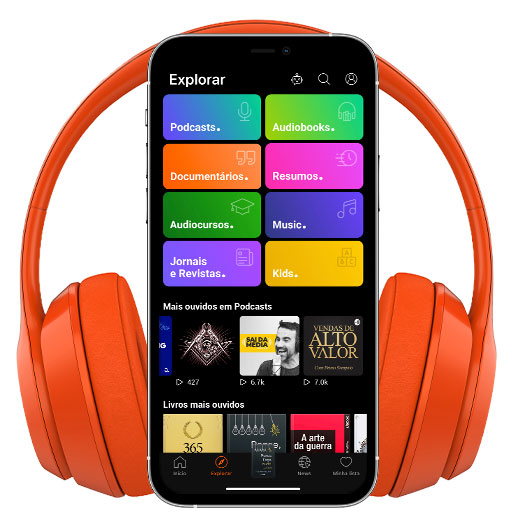Informações:
Synopsis
Geek Author presents educational series covering computer organization, computer architecture, and embedded system design. Each episode is a concise step taking the listener on a journey from the foundations of digital logic up to computer architecture and finally to system level input and output. The series is presented by engineer, author, and educator David Tarnoff. After a career in industry designing motherboards and BIOSes, David began teaching hardware concepts to students of computer science. Twenty-five years later, hes taking that content and providing it to anyone with an interest in what makes a computer tick.
Episodes
-
Episode 8.01 - Intro to Error Detection
12/07/2020 Duration: 11minDigital data has many benefits, but what happens if it's in error? Moreover, how can we tell if a bit has been flipped? Our discussion begins with parity.
-
Episode 7.06 - Stupid Binary Tricks
03/06/2020 Duration: 19minHaving learned how to program bitwise operations, it is now time to flex our bit bashing muscles by investigating some creative ways to perform common programming functions.
-
Episode 7.05 - Flipping Bits using the Bitwise Inverse and Bitwise-XOR
26/05/2020 Duration: 12minInverting or flipping the bits of an integer is the third and last method of "bit bashing" we will discuss. There are two ways to invert bits: either flip all of them at once or use a mask to identify which bits to flip and which to leave alone.
-
Episode 7.04 - Setting Bits using the Bitwise-OR
19/04/2020 Duration: 10minThe ability to set bits may not seem important at first, but many algorithms in computing depend on just that. Join us as we control bits and build integers from scratch using the bitwise-OR.
-
Episode 7.03 - Coding Bitwise Operations
12/04/2020 Duration: 10minDiscussing how to use bitwise operations to manipulate the bits of an integer would be academic if we couldn't perform the operations in our code. The good news is that we can!
-
Episode 7.02 - Clearing Bits using the Bitwise-AND
21/03/2020 Duration: 17minClearing bits within an integer is important if we want to isolate bits or set them to zero before we insert a new value. The bitwise-AND does this for us.
-
Episode 7.01 - The Need for Bitwise Operations
11/03/2020 Duration: 11minAll areas of computing, from data compression to web design, from networking to digital image storage, from system administration to high-performance computing, benefit from bit manipulation.
-
Episode 6.10 - Demultiplexers
05/03/2020 Duration: 10minA demultiplexer takes a single data stream and routes it to a selected output channel, a bit like one of those old A-B printer switches we used to physically select which printer we were sending data to. In this episode, we show how to design one.
-
Episode 6.09 - Multiplexers
27/02/2020 Duration: 09minA multiplexer, sometimes referred to as a data selector, allows us to select which digital stream to route to an output. Designing this circuit is a lot easier than it sounds.
-
Episode 6.08 - Binary Decoders
21/02/2020 Duration: 08minWhat does it take to switch on a device? In some cases, like getting a soda from a vending machine, a number of conditions must be just right. That's where binary decoders come in.
-
Episode 6.07 - Seven-Segment Display Driver Design
18/02/2020 Duration: 17minSometimes, it's nice to take a look at old tech to learn a new tool. The 7-segment display has been in our lives for years - mostly in alarm clocks. Join us as we use a Karnaugh map to design a driver for one.
-
Episode 6.06 - Don’t Cares as Inputs
10/02/2020 Duration: 05minThis short episode shows how a complicated truth table can be clarified by using "don't cares" to represent input values.
-
Episode 6.05 - Don't Cares, the Logical Kind
08/02/2020 Duration: 12minLike a wild card in a game of poker, an unspecified truth table entry called a "don't care" can make our sum-of-products expressions so much nicer.
-
Episode 6.04 - Four-Variable Karnaugh Map Example
31/01/2020 Duration: 17minMany digital designs begin with a truth table. In this episode, we do just that, and then create the simplified sum-of-products expression by way of the Karnaugh map.
-
Episode 6.03 - Makin' Rectangles
28/01/2020 Duration: 12minLet’s expand the capabilities of Karnaugh maps to combine more than just two rows of the truth table into a single product.
-
Episode 6.02 - Two- and Four-Variable Karnaugh Maps
22/01/2020 Duration: 16minTo make the move to a four-variable Karnaugh map, we are going to double the number of columns found in the three-variable map. And what happens when we halve the three-variable map? We get a two-variable Karnaugh map!
-
Episode 6.01 - Introduction to Karnaugh Maps
13/01/2020 Duration: 14minHere we introduce a graphical tool that when used correctly will produce a most simplified sum-of-products expression, all without meddling in any simplification of Boolean expressions.
-
Episode 5.03 - The Product-of-Sums Expression
08/01/2020 Duration: 13minNow that we've studied the sum-of-products form of Boolean expressions, it's time to take a look at the product-of-sums. This form uses logical OR's to generate zeros which are passed to the output through an AND gate.
-
Episode 5.02 - NAND Logic
30/12/2019 Duration: 06minThe NAND gate outputs a logic zero only when all its inputs equal logic one. Let's explore how this universal gate can be used to implement any Boolean expression.
-
Episode 5.01 - The Sum-of-Product Expression
24/12/2019 Duration: 18minWho knew how easy it would be to derive a Boolean expression from a truth table? By following a few simple steps, sum-of-products expressions are quickly converted to and from truth tables. In addition, the SOP expression is a heck of a performer.























